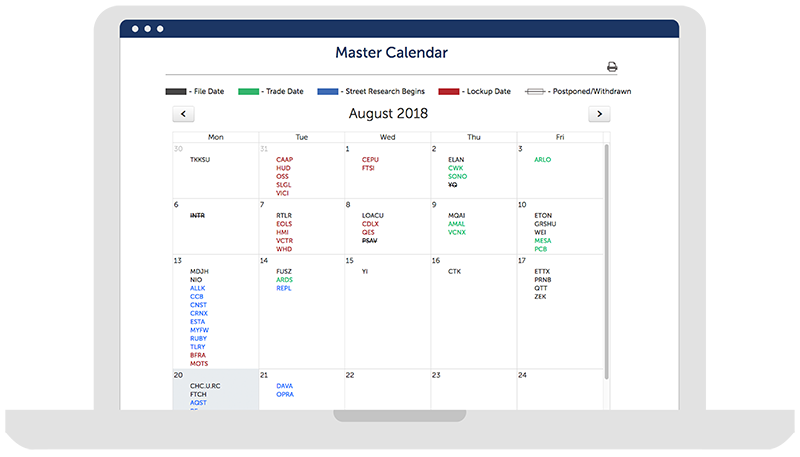Virgin Galactic (SPCE) began trading under its new name and ticker on Monday, following its merger with publicly-traded SPAC Social Capital Hedosophia (2017 IPO). After its predecessor jumped 11.2% on Friday, the stock initially traded up as much as 9.4% mid-day on Monday, before finishing the day with a 0.3% loss.
Screen for recent blank check IPOs, see the full IPO pipeline and more with IPO Pro:
Virgin Galactic's path to SPAC
With much fanfare, blank check company Social Capital Hedosophia raised over $650 million in 2017 and began trading under the ticker IPOA. Led by Social Capital's outspoken CEO Chamath Palihapitiya, the SPAC promised to disrupt the IPO market for tech companies and create "IPO 2.0."
Founded by Richard Branson's Virgin Group in 2004, vertically integrated Virgin Galactic operates both a customer-facing "spaceline" business and an aerospace manufacturer. The company took outside funding from an Abu Dhabi investment fund, and had planned to raise $1 billion from Saudi Arabia, until the death of Saudi journalist Jamal Khashoggi caused Branson to end the relationship in late 2018. Shortly after that, representatives of the SPAC and Virgin Galactic began talks.
Why go public via blank check?
Going public via SPAC merger allows executives to avoid IPO roadshows and 180-day lock-ups, and this unconventional route may have appealed to Branson. With no close public peers, Virgin Galactic would have been difficult for traditional IPO investors to value, who may have questioned its astronomical projections (revenue skyrockets to $590 million in 2023, with EBITDA of $274 million). As Lyft, Uber, and WeWork have demonstrated, the IPO environment is shaky for companies with grand visions but unproven models. Virgin Galactic's owners may have wanted to lock in substantial funding without risking valuation pushback from IPO investors. In addition, public investors are often turned off by insider selling at development-stage companies.
Financial details
Virgin Galactic commands an estimated market value of more than $2.2 billion. With $674 million from the 2017 IPO and a new $100 million investment from Palihapitiya, Virgin Galactic plans to use about $274 million to redeem shares held by insiders and $48 million for underwriter/transaction fees, leaving the company with about $450 million in cash.
During the 12 months ended June 30, 2019, Virgin Galactic booked revenue of $4 million and an operating loss of $173 million. It plans to ramp up its commercial operations starting next year.
See Virgin Galactic's proxy statement.
See Virgin Galactic's Fall 2019 Investor Presentation.
A long-term bet on space tourism
After 15 years of design, development, and testing, Virgin Galactic has successfully shown that its flight system can enter space. Now it must show investors that space tourism is a viable business. Having completed two crewed test flights into space, with a third one planned, the company expects its first commercial launch in 2020. Virgin Galactic believes it can complete 16 flights in 2020, serving 66 passengers, with tickets at about $250,000 for a one-day flight. As of June 30, the company had $80 million in refundable deposits from 603 customers. Virgin Galactic owns one space flight system, comprised of a carrier aircraft and a rocket-powered spaceship, and plans to build more in the years ahead. It hopes that the world's 1.8 million high net worth individuals with over $10 million in net assets will provide an ample market for future astronauts.


